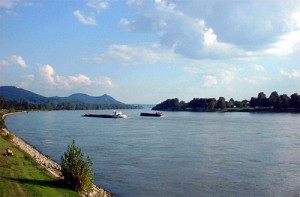 By Dr Simon Buckle, Grantham Institute
By Dr Simon Buckle, Grantham Institute
I spent a few days at the recent Bonn climate change conference (4-15 June) during the High Level Ministerial events on 5-6 June. Not that these were the most interesting things happening there. Unsurprisingly, by and large, Ministers did not stray from well rehearsed positions, reflecting the continued skirmishing over the interpretation of the UN Framework Convention on Climate Change (UNFCCC) term “common but differentiated responsibilities” in a world that is radically different from the one in which the Convention was conceived.
More interesting were the briefing session on the UN Secretary General’s forthcoming climate summit in New York on 23 September and a series of special events where negotiators got the chance to hear from and question IPCC authors about the implications of the IPCC AR5 reports for the UN negotiations and the review underway of the long-term target (2°C or 1.5°C?), a key issue for vulnerable countries (e.g. small island states) given the very different potential implications of sea-level rise. It’s worth looking at some of the webcasts.
A particularly revealing moment came during a special event to engage with Observers to the UNFCCC process organised by the co-chairs of the so-called “Ad Hoc Working Group on the Durban Platform for Enhanced Action” (ADP). The ADP is the subsidiary body charged with developing the Paris 2015 agreement as well as trying to identify ways to enhance mitigation action before 2020.
As part of the ADP process, early in 2015 countries should notify the UNFCCC Secretariat of their “intended nationally determined contributions” (INDCs) to emissions reductions in the period after 2020. I therefore asked the ADP co-chairs how the UN process would ensure that these bottom-up contributions – and the aggregate global emissions that they implied – would be consistent with the long-term climate targets that countries had committed to. This was indeed a critical issue they said, but they had as yet no idea how this might be achieved.
This seems to me to be a pretty fundamental problem. An aspiration to achieve “a carbon neutral world in the second half of the century” (the current UNFCCC thinking on such an overarching aim) is in my view just not good enough to constrain climate risks and achieve a cost-effective transition to a low-carbon world. In particular, it says nothing about the emissions path over the next 30 years or so.
We know that effective international action on climate is difficult to achieve given the concerns over competitiveness and free-riding. So instead of the top down approach to earlier climate agreements (i.e. Kyoto with it modest targets and timetables) or the bottom-up approach that has now emerged by default from the political trauma of the 2009 Copenhagen summit, we now need a hybrid approach. What I have in mind is that the aggregate bottom-up emissions pledges under the UN process need to be supplemented and given coherence by a political commitment among the major emitting economies – notably the US, China and the EU – to achieve a clear, measurable and negotiable near-term mitigation objective, which would be reflected within the Paris agreement. My own suggestion for what this objective should be is that it should commit to achieving a global peaking in fossil-related carbon dioxide emissions by 2030 or earlier if possible, with a subsequent decline.
Recent developments in the US and China suggest that such a goal is not impossible, particularly if the EU can get its act together and agree its 2030 targets at the October Council. Moreover my own calculations suggest a global peak in fossil carbon dioxide emissions could be achieved while allowing developing country emissions (e.g. in India) to continue to grow for some time to come, as they must in any politically viable deal.
Of course achieving a global peak in carbon dioxide emissions is just a first step on the road to a longer term objective and if it is achieved too late or the peaking level is too high, we may not be able to achieve some of the more stringent climate targets. But if we just focus on the long term target, we will end up in a zero-sum negotiation over the level and shares of a corresponding fixed carbon budget consistent with this target. The urgent need at this point in time is to reverse the continuing growth in global CO2 emissions, a necessary first step in achieving any long-term goal. The pace of emissions reductions after the peak and the eventual level of emissions in the second half of the century can be agreed at future summits.
No doubt there are several other ideas for making Paris a success being discussed by governments in private as I write. One might be to build in flexibility to the Paris agreement itself and have short commitment periods, perhaps to 2025 initially but agreed on a rolling five years basis thereafter, mirroring the UK approach to setting carbon budgets. And there needs to be far more public discussion about these alternatives. But these technical suggestions are worthless without political leadership. The next 18 months presents an unprecedented opportunity to shift the world decisively onto a cost-effective, low climate-risk development path, with myriad benefits for our wellbeing and economic development. The Secretary General’s September summit will be an early indication of whether our political leaders are ready to make this step or not.